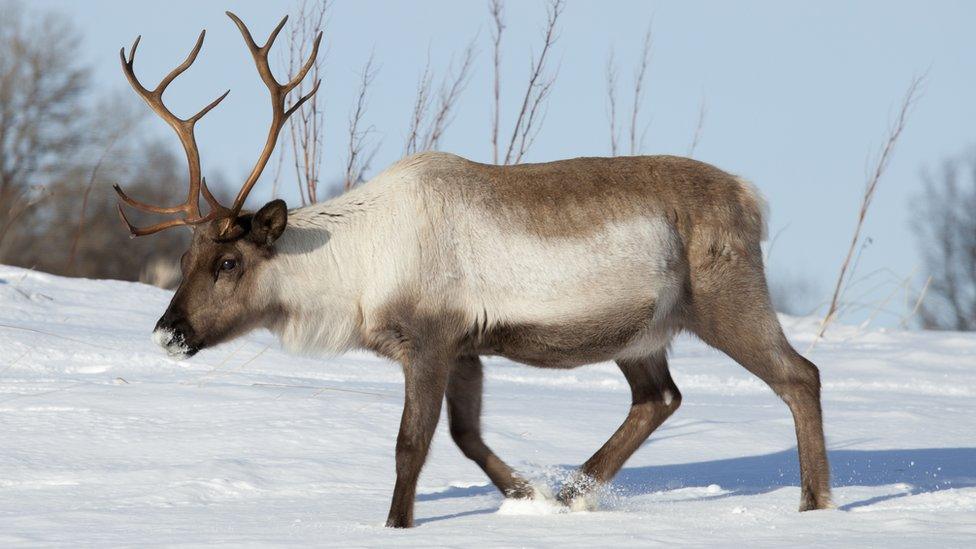Arctic reindeer numbers fallen by more than half
- Published
- comments

The population of wild reindeer in the Arctic has fallen dramatically over the last 20 years.
That's what a new report on the impact of climate change in the Arctic has revealed.
Numbers of the animal, also known as caribou, fell from almost 5 million to just over 2.1 million.
The wild herds in northern Canada and Alaska are thought to have been affected the worst, with a warmer climate being identified as the main cause.
How does a warmer climate affect reindeers?
Wild herds in northern Canada and Alaska are known as caribou - they are the same species as wild reindeer
Weather patterns and changes in the food available are making the Arctic region a harsher place to live for reindeers.
A warmer Arctic has less food and more insects, making it a much worse environment for these animals to survive.
One of the scientists involved in the research for the latest report, Prof Howard Epstein, explains:
"We see increased drought in some areas due to climate warming, and the warming itself leads to a change of vegetation."
WATCH: Naz explains what climate change is, what causes it and what the effect is on our planet
Reindeer like to eat lichen - vegetation that grows at ground level - but a temperature increase makes it harder for lichen to survive.
"Warming means other, taller vegetation is growing and the lichen are being out-competed," says Prof Epstein.
As well as the increase in insects, which cause irritation to the animals and cause them to use more energy trying to escape them, increased rainfall is a problem too.
When the rain falls on snowy ground it freezes, causing a hard layer of ice to form between the animals and their food.
This makes it much more difficult, if not impossible, for reindeer or caribou to push through and eat.
So what can we do?
A warmer Arctic has less food and more insects, making it a much worse environment for caribou
The aim of this research in the region - which was released at the American Geophysical Research Union meeting - is to understand its impacts and learn how to adapt to a changing climate.
Reducing the world's carbon emissions has been identified by scientists and world leaders as the main way to slow the rate of climate change.
This can be done through governments around the world working together, and by humans changing our behaviours and the way we consume and live our lives.
For now, the evidence suggests that the warming of the Arctic will continue.
- Published17 October 2018
- Published17 October 2018
- Published9 October 2018
